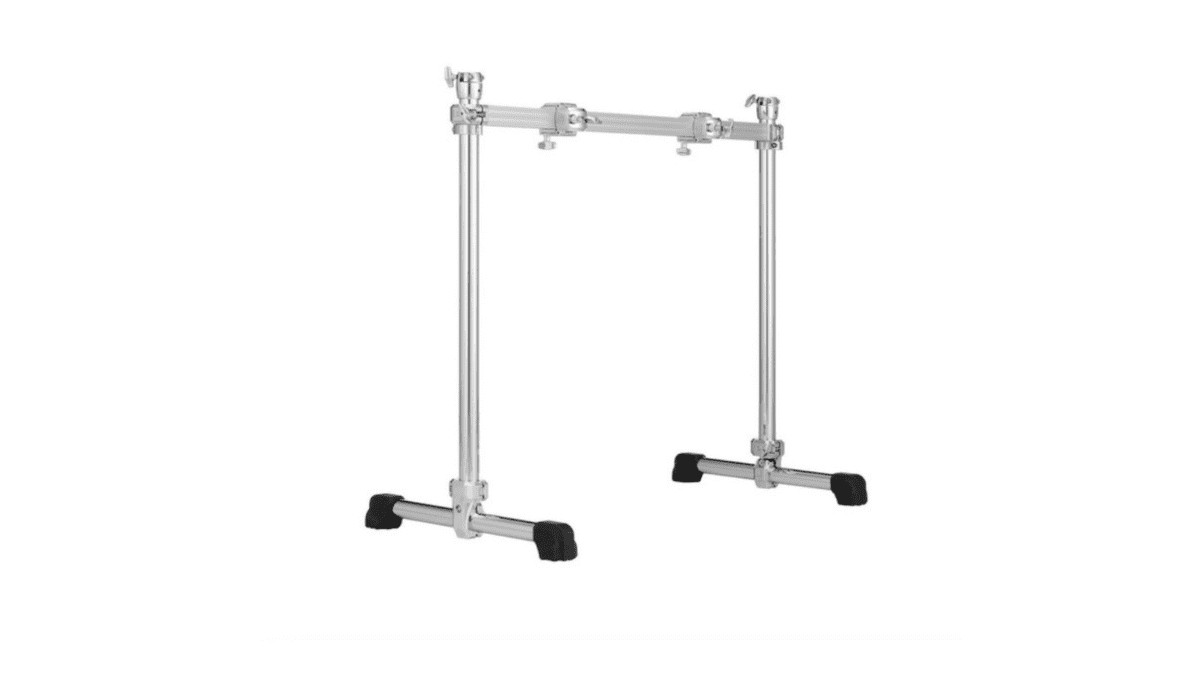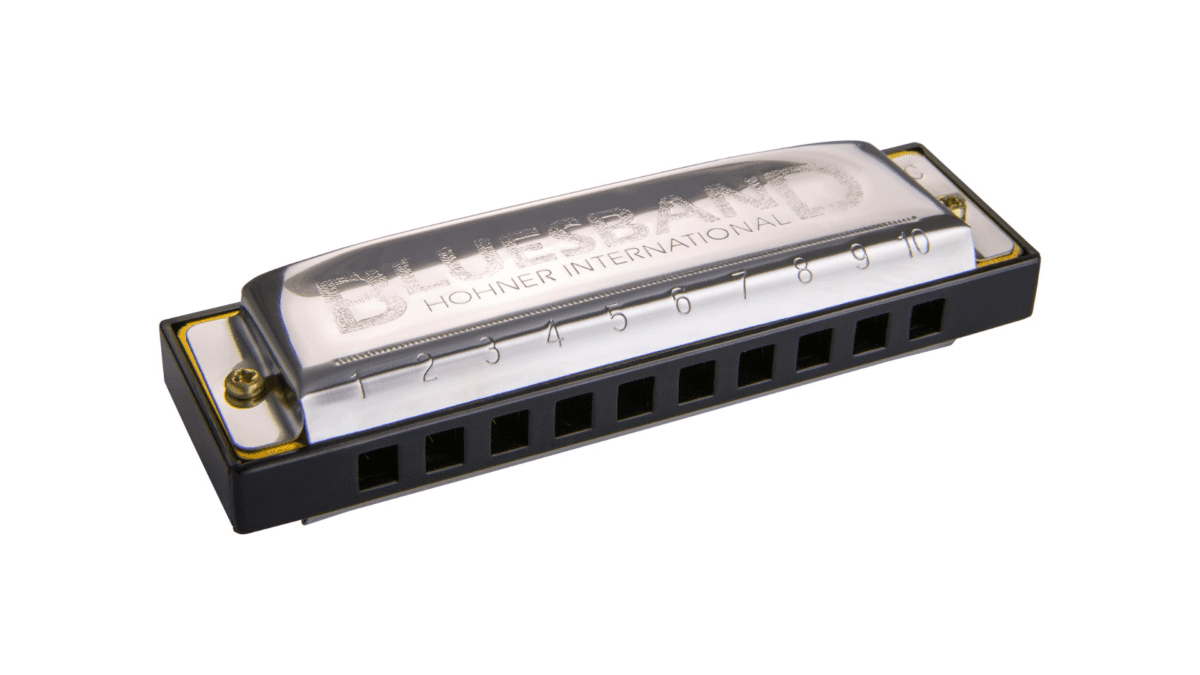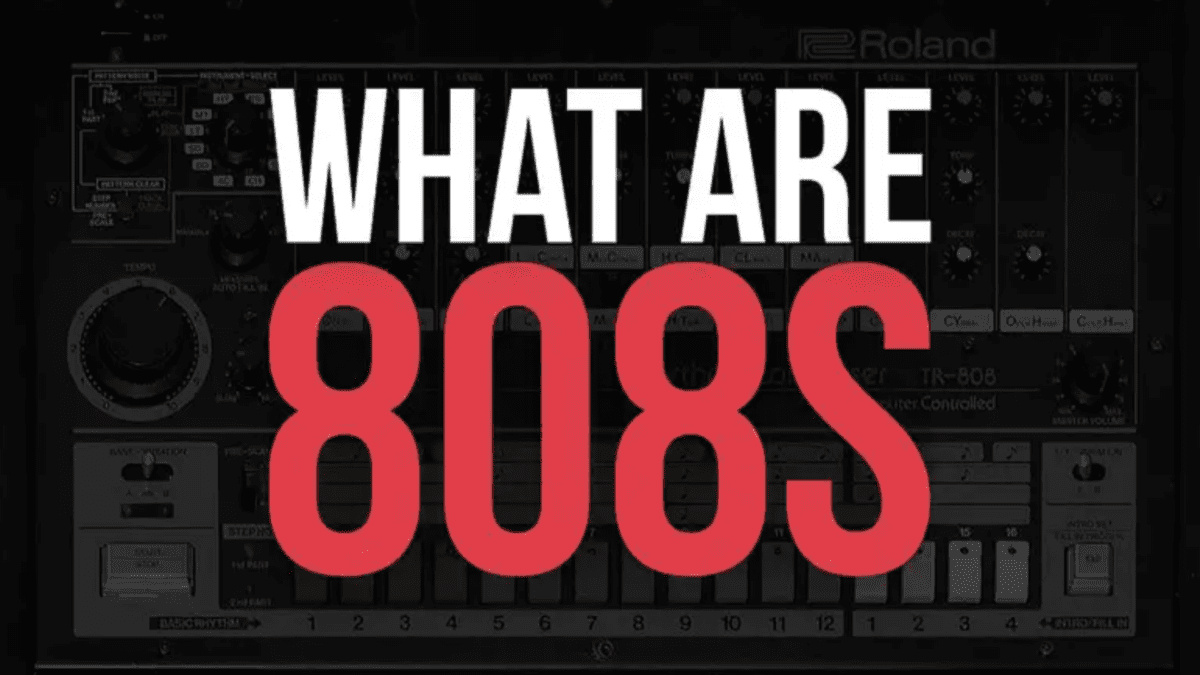If you’ve decided to learn guitar then congratulations! You’ve made an excellent decision that will bring you years of happiness as a musician (and some frustration, no doubt!) You also now have some choices in front of you. First and foremost, what kind of guitar you’re going to play? In this article, we will look at electric vs acoustic guitars, the differences, and help guide you in your decision.

Starting Choices
Whilst all guitars are essentially played in the same way, they are not created equally. Most people will tell you to buy acoustic first. The usual reasoning is that the strings are thicker and harder to push down. it is better for conditioning your fingers to move on to electric later. Whilst that’s true to an extent, there’s a lot more to consider than that when deciding whether acoustic or electric guitars are better for beginners. Let’s start off by taking a look at the difference between electric vs acoustic guitars.
Electric Vs Acoustic Guitar: What’s The Difference?
Acoustic and electric guitars have a lot in common. They are both instruments with six strings that create music by causing those strings to vibrate. The pitches (notes) the guitar plays can be changed by holding down strings against the fret wires on the neck of the guitar with one hand. The other hand causes those strings to vibrate by plucking on those strings with either a finger or a plectrum. The further up the neck you fret, the higher the notes get.
The guitar is one of the most versatile musical instruments out there. It has some qualities in common with a piano. You can either play multiple notes together to play chords or play them individually to play melodies. But because you make contact with the vibrating strings directly, you are also able to manipulate the notes you play in all sorts of ways that aren’t possible on many instruments. Add to that the ability to alter the sounds of the electric guitar vs acoustic with technology (such as distortion pedals, amps and preamps), and you start to see why the guitar has been the dominant creative instrument of choice in Western music since the 1950s.
Strings
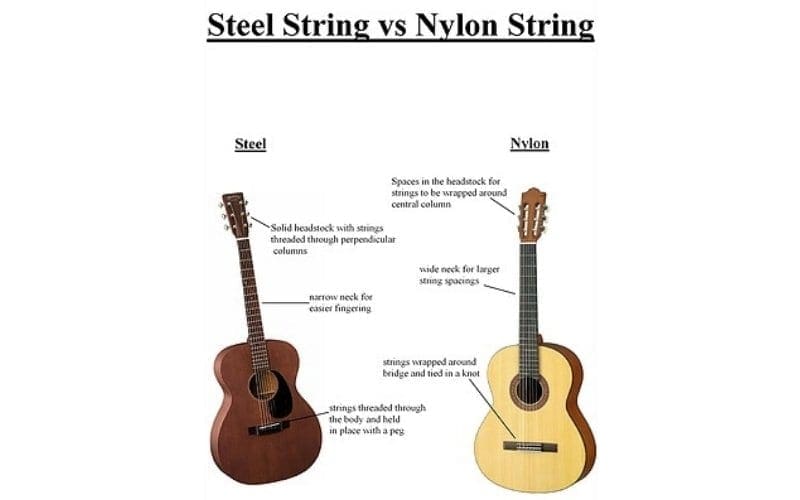
The difference between acoustic and electric guitars is how the sound of the strings is amplified. With the acoustic guitar, the vibrations of the strings are transmitted through to the soundboard on the face of the guitar’s body and then projected through the sound hole on the front. This makes the acoustic a self-amplifying instrument. The quality and volume of the sound it makes depend on the wood used in its construction, the shape and size of the guitar and the technique of the person playing it. Acoustic guitars come in two types: nylon (classical) and steel string. Steel-string acoustics have a harder and brighter sound and are typically found in folk, pop, jazz, and some rock and blues songs. Nylon-stringed guitars have a softer and quieter sound and are typically used for classical and Spanish music.
With an electric guitar, the vibrations of the strings are converted into an electrical signal by pickups. These are coils of wire wrapped around a magnet, the magnetic field of which is disrupted by the vibrations of the string in order to generate the signal. This signal is transmitted to a guitar amplifier that then produces the sound of the instrument. This method of generating the sound has two effects. Firstly, it means that the wood used to create the guitar is far less instrumental in how the instrument sounds. Instead, the construction of the pickups is paramount. Secondly, it means that the electrical signal can be manipulated to create interesting effects and extremely high volumes. Electric guitars are mainstays of all the various forms of rock, pop, jazz, blues, funk and even some hip-hop.
So… which should you pick?
Beginner Guitar: Acoustic Vs Electric Guitar

So, are you wondering whether to go for an acoustic or electric for beginner levels? Wondering ‘is it easier to learn guitar on acoustic vs electric’? Frustratingly for beginners, there are aspects of both the acoustic and the electric guitar that make each easier to play than the other. Let’s look at acoustic guitar vs electric guitar for the beginners out there.
Strings
This is a big one. The initial stages of learning guitar can literally be quite painful. Not just for the ears of your neighbours, but for the tips of your fingers too. As you push down on the strings, the skin on your fingertips will wear away and be replaced by tougher calluses. This is a painful process, and playing the guitar with undeveloped calluses is physically more difficult because you’re pushing down on the strings with a soft surface instead of a hard surface, meaning a stronger grip is required.
There are two schools of thought here. Some say you should pick the guitar with the toughest strings, power through it and you’ll come out the other side with tougher calluses and able to play any guitar. Others say that the most important thing is to pick the easiest guitar to play that you possibly can, get some easy wins and a few songs under your belt, develop the other aspects of your technique and then work up to the harder guitars later.
The best advice I can give you? Know yourself. If you’re patient and can keep going through something even though it hurts and doesn’t sound good right now because you know it will later, then by all means go with the more difficult choice. If you are someone who needs immediate results for motivation, go with the easiest!
String types in order from easiest to hardest to play:
- Nylon Stringed Acoustic Guitar
- Electric Guitar
- Steel Stringed Acoustic Guitar
Neck Width
Equally as important regarding how easy a guitar is to play is the size and shape of the neck. There are a few differences to consider here. Firstly, the gap between the strings. Electric guitars tend to be played using a plectrum. Because of this, the strings on electrics tend to be placed closer together for ease of picking. Therefore, the width of the necks tends to be smaller than steel-stringed acoustics (Steel-stringed acoustics are sometimes played using plectrums but sometimes picked with the fingers).
Having more space between the strings makes fingerpicking easier to do, but results in a wider neck profile than is commonly found on electric guitars. Finally, nylon-stringed guitars feature even wider necks than steel-stringed acoustics. This is because they are traditionally built with only fingerpicking in mind.
Secondly, there are different neck profiles available that suit different players’ styles. The most common ones are the U and the C-shaped neck. U-shaped necks are deep and more comfortable for players with large hands. However, C-shaped necks are more shallow and suit average and small-handed players better. Players with large hands may actually find a shallow C-shaped neck to be so small that they can’t get their hand positioning right. Furthermore, players with small hands will find that U-shaped necks may cause them physical discomfort to play.
There are also V-shaped necks, which are more specialist. These suit players that play with a high thumb position. These are rare and aren’t recommended for beginners. They are generally bought by people who are looking for something to accommodate their unique technique.
Necks: Difficulty Ranking
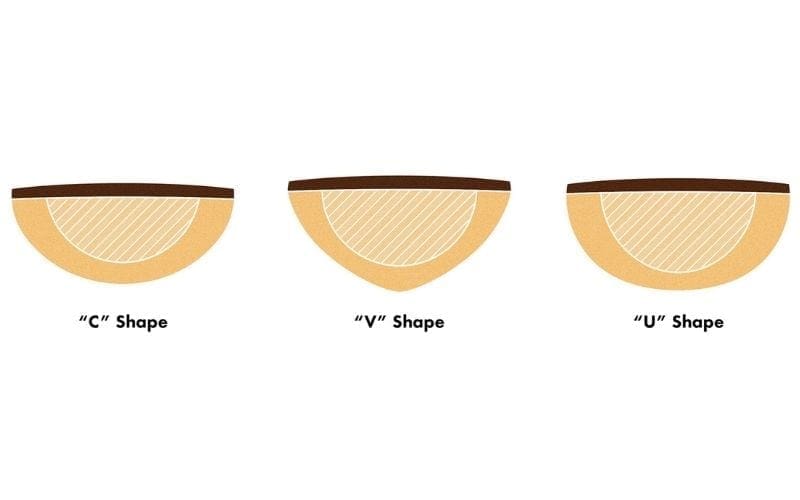
Guitar necks in order of easiest to hardest to play for average and small-handed people:
- Electric Guitar – C-shaped neck
- Steel String Acoustic Guitar – C-shaped neck
- Nylon String Acoustic Guitar – C-shaped neck
Guitar necks in order of easiest to hardest to play for large-handed people:
- Nylon String Acoustic Guitar– U-shaped neck
- Steel String Acoustic Guitar – U-shaped neck
- Electric Guitar – U-shaped neck
Acoustic Vs Electric Guitar: Electro-Acoustic Guitar
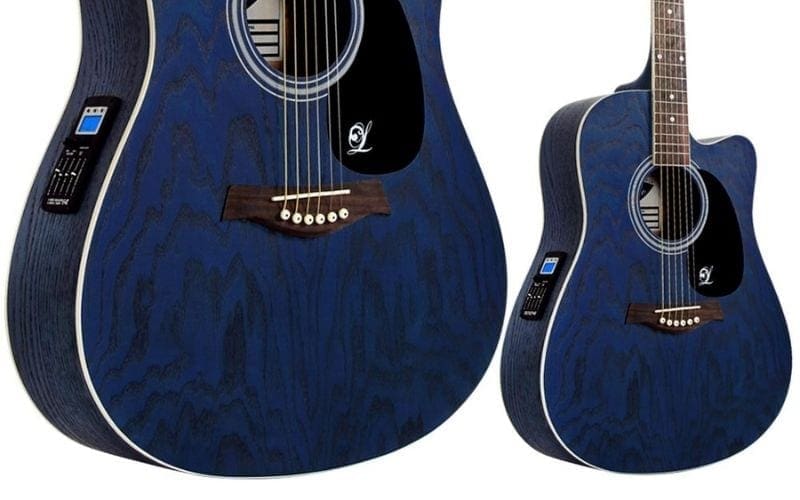
It’s worth mentioning at this point that there is another choice available; the electro-acoustic Guitar. Whilst the name may suggest something that is exactly halfway between an acoustic guitar and an electric, that’s not quite right. Electro-acoustics are essentially acoustic guitars fitted with a pickup, a microphone or, ideally, a combination of the two.
Electro-acoustic guitars look, feel, and sound like acoustic guitars when played normally, but come with the additional advantage that they can be plugged into amplifiers or PA systems in order to amplify the sound. Any type of acoustic guitar can also be manufactured as an electro-acoustic.
Acoustic Vs Electro-Acoustic
Whether you should choose an electro-acoustic or acoustic guitar depends upon a couple of things. Firstly, the prices are usually a little higher for electro-acoustics, for the simple reason that you’re paying for the electronic components required to amplify the sound.
Secondly, there is a slight trade-off in tone. Remember earlier when we talked about how the wood an acoustic guitar is made from plays a greater part in the quality of the tone than in the electric guitars? When pickups,
microphones, and the cables required to connect them are mounted to the inside of an acoustic guitar it can have a slight dampening effect on the ability of the wood to resonate when played unplugged. This can result in a slightly quieter sound or a less resonant tone.
For this reason, players who want to perform on stage in some capacity should obviously choose an electro-acoustic for the ability to perform at higher volumes. Guitarists who only wish to play unplugged may wish to look at guitars without pickups and microphones for the improved resonance and the reduced price tag.
Guitarists who wish to perform live and record may want to consider
having an electro-acoustic for the stage, and a straightforward acoustic for recording to get the best of both worlds.
Why Do You Want To Play the Guitar?

The final and biggest question you should be asking yourself is this. What is it that made you want to pick up the guitar?
Whilst there are other factors to consider, the only thing that matters is what is going to drive you to pick your guitar up every single day. Different kinds of guitars are more prominently found in different kinds of music. You’re going to find yourself becoming disappointed early on if you buy a nylon-stringed acoustic and try to imitate the riffs on your favourite rock guitar albums. The sound will be too soft and you will lose the ability to add things like distortion to make those single-note riffs drive hard.
Similarly, if you buy an electric and then try to play a classical piece, the notes may all be there, but the tone won’t fit the style you’re after. Plus, the fingerpicking technique will be harder to achieve fluidly. Nothing will kill your urge to play the guitar quicker than the disappointment of expecting one sound and hearing another.
How To Decide: Acoustic Guitar vs Electric Guitar
The best way to make this decision if you’re unsure is to go through all your playlists, albums and videos of your favourite musicians playing. What sounds grab you the most? Do you prefer intimate live-lounge-style shows? Big stadium rock gigs? Classical recitals? You’re bound to like some of each! However, making lists of different songs you’d like to play alongside what kind of guitar they’re played on will give you an idea of what kind of guitar to start with.
Of course, there’s always my personal motto, “There’s always room for one more guitar.” Just because you start with an acoustic, doesn’t mean you can’t treat yourself to an electric six months down the line and open up new possibilities. Try to avoid being one of those people that use buying new gear as a substitute for actually practising, but if you really do love all types of music there’s a lot to be said for owning different kinds of guitar. Perhaps use them as a reward. Mastered a song you struggled with for ages? Buy a guitar to celebrate! Joined a band? Buy a backup guitar for on-stage incidents!
Which guitar is easier to learn on? – electric vs acoustic guitar
Although the electric guitar may feel easier to play initially, it doesn’t necessarily mean it’s easier to learn on. While the electric guitar may be more playable and feel easier on your fingers, there are trade-offs to consider. The acoustic guitar has an immediacy that the electric guitar lacks, requiring only the guitar and a pick, making it super-portable and fuss-free.
To develop your own sound, become comfortable with high volume, effects pedals, amplifier types, and other peripherals. Focus on the fundamentals for now, but consider using a guitar capo and looper pedals in the future. Short-scale acoustic guitars with reduced string tension and smaller bodies may be more manageable for young fingers. Choose a guitar style that aligns with your desired playing style.
Choosing a guitar: What sort of music do you like?
It’s important to ask yourself what music inspires you when choosing an instrument. If you’re inspired by Slipknot, an electric guitar might be the obvious choice. If it’s Ed Sheeran, an acoustic guitar might be more suitable. Follow your inspiration and learn the songs of your idols for a satisfying and addictive learning experience.
Choosing the acoustic guitar essentials
If you’re interested in acoustic guitars, there are affordable options for beginners. The best body shape depends on personal taste, with dreadnought and jumbo shapes being great for strumming, while orchestra and auditorium shapes are more comfortable for smaller players. Smaller-bodied acoustics like the 00 and parlor are great for finger-picking. You’ll need a pick, guitar strap, gigbag, and capo for playing.
Electric guitar essentials
Choosing an electric guitar shape is like choosing from various pasta shapes. Find a classic, well-balanced shape that feels good both sitting and standing. Consider pickup types, such as single coil and humbucker, which affect tone. Other features to consider include vibrato/tremolo systems. Keep in mind that you’ll need an amplifier, and there are affordable options for beginners with onboard effects.
Closing Thoughts
Did this article help you make a decision? Tell us what you bought in the comments. If you started on a particular type of guitar, tell us what led you to that decision and how it worked out for you! Also, check out our article on how to tune a guitar to get you started.






